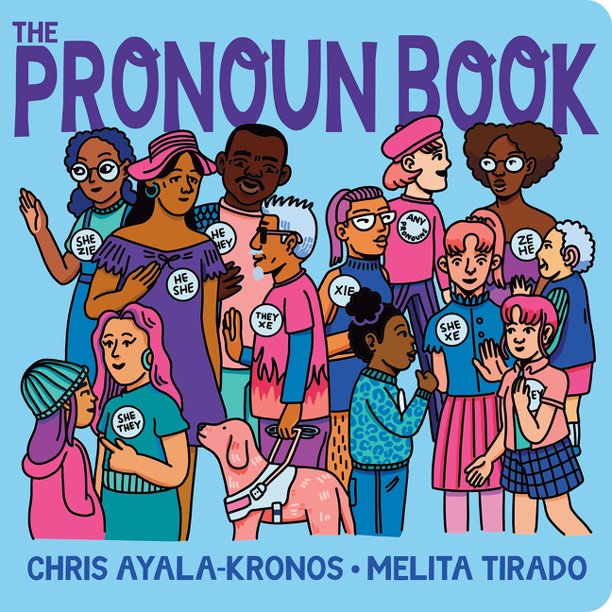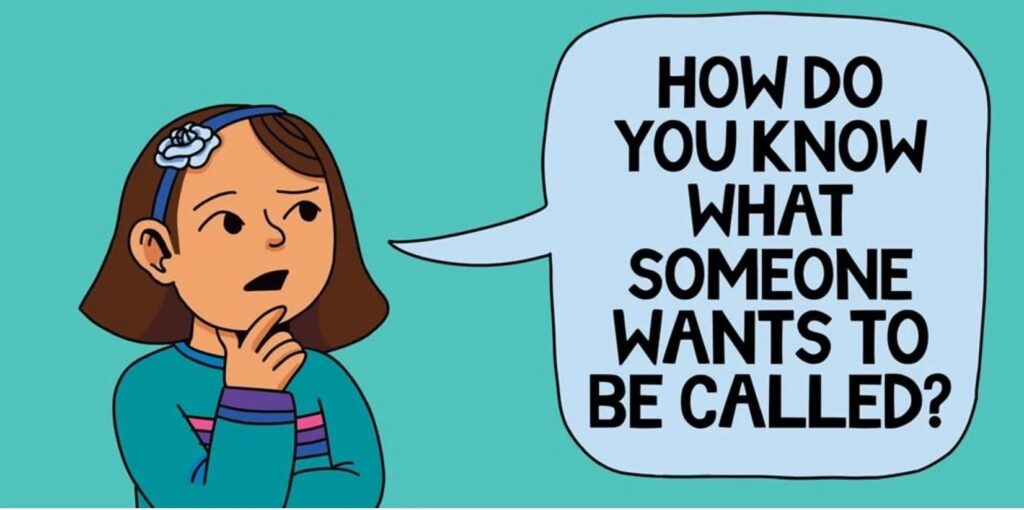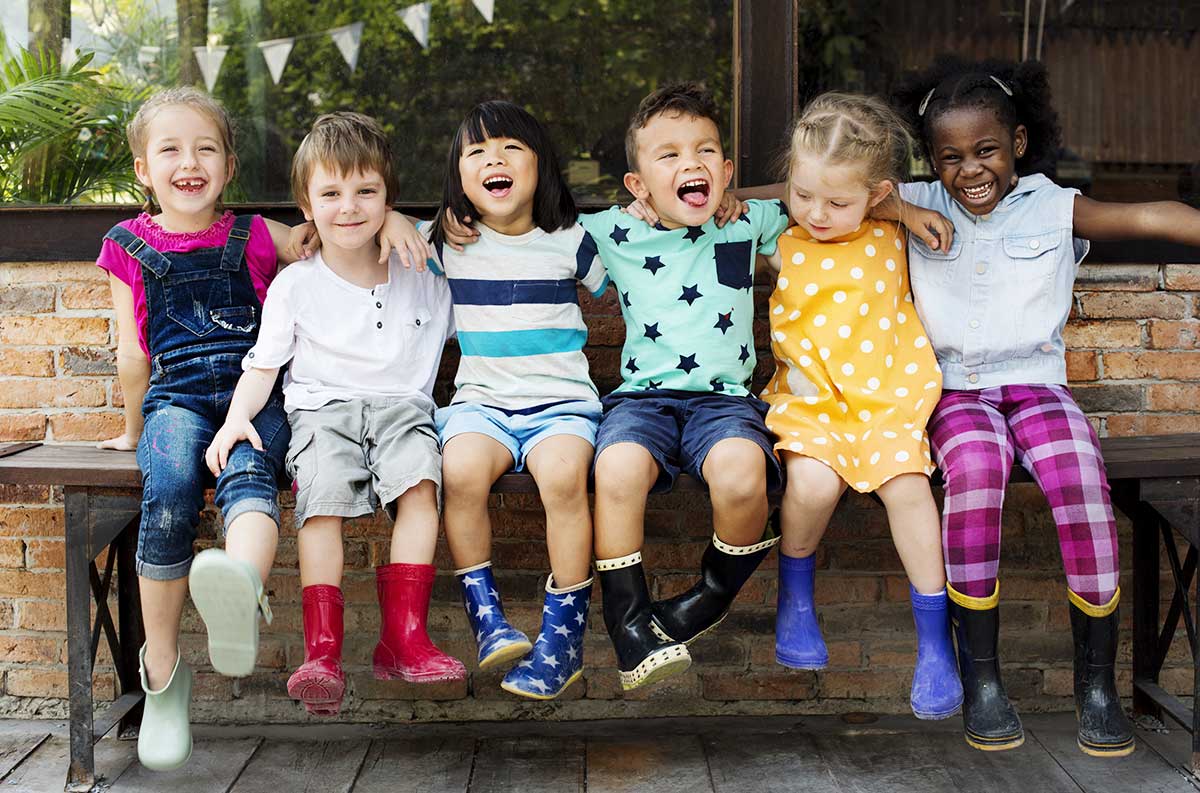
Inclusive Children's Book Teaching Guide
The Pronoun Book
What is this book about?
They, she, he . . . all together, us! Join in this book's joyful celebration of people and their chosen pronouns. The Pronoun Book helps children understand the pronouns that people use and why.
Through a diverse assortment of characters, the book introduces children to the singular and possessive forms of the pronouns "he," "she" and "they."
As they learn these pronouns, children will also be introduced to the idea that gender is something that people share with us, not something that we assume based on how they look.
Who is depicted in this book?
- Children or adults who are/may be LGBTQ+
- Children or adults who transcend gender stereotypes
- Although this book does not directly address the intersectionality of identities, the individuals depicted are diverse in many ways, including race, ethnicity and ability.
What early childhood themes and concepts does this book explore?
- Pronouns are not a complex adult concept and are easy for young children to learn and understand.
- Common gender stereotypes lead people to make incorrect assumptions about gender and pronouns based on appearances.
- Friends and family can take on different roles while planning a celebration.
- Common activities featured in the book, such as soccer and shopping, will be familiar to young children.
How does this book support anti-bias education?
The Pronoun Book uses illustrations of a diverse cast of characters and simple, straightforward text to introduce young children to the pronouns that different people use. The book can be used to spark discussions about gender identity and expression and promote a culture of respect and inclusion for all individuals.
Depending on how the book is shared or used—and the developmental level of the children—the images and text may be used to support the following core goals from the book, Anti-Bias Education for Young Children and Ourselves:
Identity—Teachers will nurture each child’s construction of knowledgeable and confident personal and social identities so that children will demonstrate self-awareness, confidence, family pride, and positive social identities.
Diversity—Teachers will promote each child’s comfortable, empathetic interactions with people from diverse backgrounds so that children will express comfort and joy with human diversity, use accurate language for human differences, and form deep, caring connections across all dimensions of human diversity.
How can this book be used to meet early childhood learning standards?
For all ages
Use The Pronoun Book to meet early childhood literacy standards >
For children from birth to age three
Teaching suggestion: Point out forms of play, other actions, and various familiar settings that the youngest children can react to, point at, or name.
What Illinois Early Learning Guideline does this meet for children from birth to age three?
Developmental DomainSocial-Emotional Development
Standard: Relationship with PeersChildren demonstrate the desire and develop the ability to engage and interact with other children.
Indicators for children:
- Begins to engage in simple reciprocal interactions such as rolling a ball back and forth (16–24 months)
- Demonstrates a preference for select peers (21–36 months)
For preschoolers (ages three to five)
Teaching suggestion: Encourage the children to discuss the similarities and differences between the featured characters. Then point out that assumptions about the characters' gender identities or pronouns cannot be based on appearance alone. Note that the characters who use the same pronouns on the same pages in the story have hair that is short, long or in-between.
What Illinois Early Learning and Development Standards does this meet for preschoolers?
Social Studies Standard18AExplore people, their similarities and their differences.
Benchmark 18.A.ECa:
Recognize similarities and differences in people.
Teaching suggestion: As the story unfolds, each character is engaged in a specific type of routine or action, such as shopping, making bread or playing music. At the end of the story, it is revealed that these characters were preparing for a picnic where everyone joined together in a celebration. Ask the children to give examples of ways that they “pitch in” and play various roles in the classroom, in school and elsewhere.
What Illinois Early Learning and Development Standards does this meet for preschoolers?
Social Studies Standard14DUnderstand the role that individuals can play in a group or community.
Benchmark 14.D.ECa:
Develop an awareness of what it means to be a leader.
Benchmark 14.D.ECb:
Participate in a variety of roles in the early childhood environment.
Teaching suggestion: Compare the celebration at the end of the book to other celebrations that the children have attended and identify some similarities and/or differences in the ways that children, families and communities celebrate.
What Illinois Early Learning and Development Standards does this meet for preschoolers?
Social/Emotional Development Standard31ADevelop positive relationships with peers and adults.
Benchmark 31.A.ECe:
Develop positive relationships with peers.
Teaching suggestion: Support the children's gender identities by using their pronouns and defaulting to "they" rather than the gendered terms "he" or "she." Listen to and validate their use of pronouns and their choices of gender expression.
What Illinois Early Learning and Development Standards does this meet for preschoolers?
Social/Emotional Development Standard30BRecognize own uniqueness and personal qualities.
Benchmark 30.B.ECa:
Describe self using several basic characteristics.

